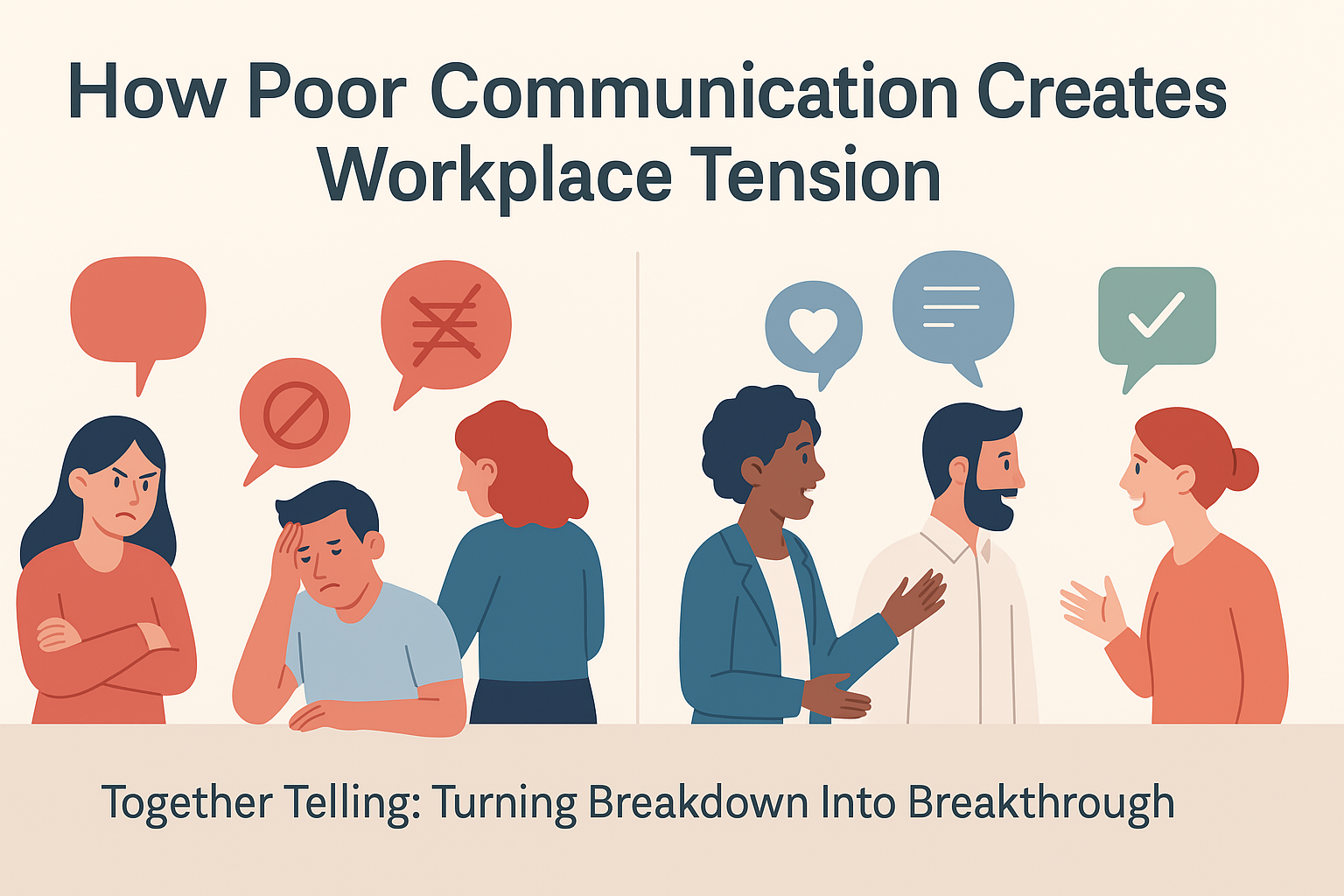
Introduction: The Silent Killer of Workplace Vibes
You know that awkward tension in the office? The kind where no one makes eye contact at the coffee machine, and the group chat goes suspiciously quiet? Nine times out of ten, it didn’t start with a dramatic showdown; it started with poor communication.
When messages aren’t clear, people fill in the blanks. Spoiler alert: They rarely assume the best. Instead, miscommunication creates frustration, misunderstandings, and eventually, a culture where everyone walks on eggshells.
Let’s dive into why communication breakdowns are your workplace’s biggest tension builder (and what we can do to fix it).
How Poor Communication Causes Tension (And Ruins Coffee Breaks)

1. Lack of Clarity Leads to Frustration
Few things are more annoying than trying to do your job with vague instructions like, “Make this look better” or “Handle that ASAP.” Better how? ASAP when?
Why does it happen?
Assumptions replace explanations.
Managers forget that “obvious” tasks aren’t obvious to everyone.
Instructions get lost in endless email threads or Slack messages.
The Fallout:
Employees waste time redoing work or guessing what’s needed.
Morale drops because no one wants to feel like a mind reader.
Frustration simmers until it boils over in meetings.
Corporate Humor Moment: “Making it look better” is just corporate speak for, “Good luck figuring out what I want because I don’t know either.”
2. Unresolved Conflicts Escalate Due to Miscommunication
Here’s the thing: most workplace conflicts aren’t about the thing they’re arguing over. They’re about what wasn’t said or what was misunderstood.
Why does it happen?
Feedback is vague or passive-aggressive.
People avoid tough conversations until resentment builds.
Messages get interpreted as criticism instead of collaboration.
The Fallout:
Small issues become huge because they’re never addressed.
Teams start blaming, gossiping, or straight-up avoiding each other.
Collaboration? Forget it. Everyone’s too busy keeping score.
Corporate Humor Moment: “We should discuss this offline” — AKA “I’m mad, but I’ll save it for a passive-aggressive Teams message later.”

3. Teams Develop a Culture of Avoidance
When communication is consistently poor, people stop trying. Why bother asking for clarity if the answer just confuses you more?
Why does it happen?
People fear being labeled as “difficult” or “needy” for asking questions.
Leaders unintentionally discourage open dialogue.
The easier option becomes avoidance instead of engagement.
The Fallout:
Innovation tanks because no one speaks up.
Mistakes multiply because no one double-checks assumptions.
Workplace culture shifts from collaborative to survival mode.
Corporate Humor Moment: “Let me know if you have any questions” is often code for “Please don’t have any questions.”
How Together Telling Reduces Workplace Tension (Before Someone Flips a Desk)
At Together Telling, we know that workplace tension is expensive—it costs teams their morale, productivity, and worst of all, the will to attend another Zoom meeting.
1. Implementing Structured Communication Frameworks
No more guessing games. We:
Teach teams how to frame messages clearly with specifics.
Encourage leaders to use structured templates for project briefs.
Introduce checklists to reduce “Did anyone handle that?” moments.
Result: Clear expectations, fewer crossed wires, and way fewer “What did you mean by that?” Slack messages.

2. Encouraging Proactive Feedback Systems
Feedback shouldn’t feel like a surprise attack. We help teams:
Normalize frequent, low-stakes feedback.
Build feedback loops where clarity and candor are rewarded.
Train managers to address issues before they spiral.
Result: Teams that speak up, clear the air, and collaborate like pros.
Final Thoughts: Communication Shouldn’t Feel Like a Game of Telephone
Workplace tension doesn’t come out of nowhere. It’s the predictable result of poor communication habits repeated until everyone’s too tired to fix them.
The fix? Clarity, structure, and proactive feedback.
At Together Telling, we help teams talk like humans, not like walking email chains. The result? Less tension, more collaboration, and a workplace where the coffee machine becomes a place for actual conversation, not silent judgment.
Backlink Source:
Harvard Business Review: Managing Workplace Conflict

